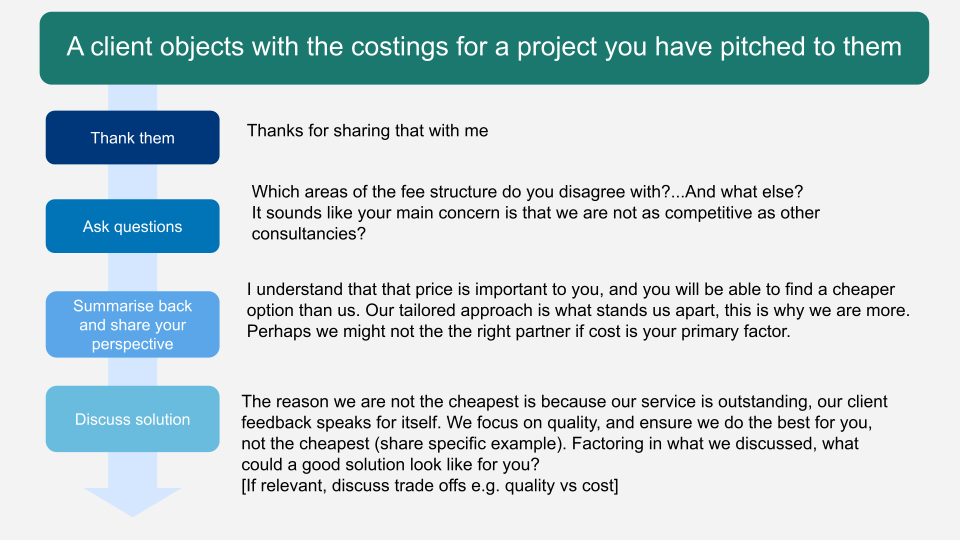4th February, 2021 • 4 min

Written by Eloise Barbier
24th October, 2023 • 4 mins

You are experiencing friction with a colleague due to different working styles
You need to negotiate a deadline on a project
Someone in your team pushes back on coming into the office more
A client objects to a solution you have proposed
Difficult conversations are a key part of our life, both at work and at home. Yet we often find them difficult and either put them off or don’t go about the conversation in the best way.
Why do we struggle with conflict so much?
There are many reasons why we find these conversations challenging: the context of the conversation, our desire to people please, our upbringing and how it has influenced our approach to conflict.
One key reason we find these conversations challenging is actually due to our brain: conflict triggers our fight or flight response, which either makes us defensive and blurt something out (fight) or withdraw from and avoid the situation (flight).
The good news is that we can develop our skill in handling difficult conversations and challenge our brain’s primal response. This will help us develop our emotional intelligence, resolve conflict and, depending on the situation, also achieve the target outcome of our conversation (e.g. a win-win situation at the end of a conversation).
To start, there are 3 key areas to focus on when developing our conflict resolution skills: perspective taking, our response and mindset.
1. Perspective-taking
Chris Voss revolutionised negotiation tactics by advocating for a more collaborative and empathic approach through his book Never Split the Difference. One of his key messages is the use of “tactical empathy”, which involves understanding the other person’s perspective and emotions in a conversation – even if you don’t agree with them. This is a crucial concept to apply to any kind of difficult conversation.
The thing is, we have a tendency to not respond with empathy. When someone raises an issue or disagrees with us, we can get defensive or jump straight to the solution (fight or flight in action!). The risk of this is that it can prevent us from finding out the whole picture, and damage our relationship with the individual we are speaking to.
Let’s take the example of someone in your team who shares with you that they are struggling with the workload on a project they are currently managing.
Here are some examples of what empathy doesn’t look like:

So how do we show empathy?
One of the ways to do this is by practicing perspective taking before, during and after the conversation.
To do this, we can break a conversation down into two main perspectives:
We recommend reflecting on these prompts:
1. Before the conversation: to best prepare and build our confidence
2. During: in the heat of the moment, it can be difficult to take a step back and have perspective on the situation. These questions can act as cues to help you do that
3. After: to reflect on the conversation, identify next steps and give ourselves feedback on how we handled it
2. Response
To best respond in these conversations, we want to avoid jumping to the solution too quickly, give them space to share so that they feel understood. This will help demonstrate tactical empathy, move both us and the individual out of fight or flight, and work together towards a solution.
This is a four part approach to respond that you can adapt based on the conversation:
Some examples of what this can look like:


3. Mindset
Taking a step back, our mindset is also a really important part of these more challenging conversations. Approaching the situation with a growth mindset is a valuable way to keep developing our skills in having honest conversations, building on our successes and learning from mistakes. For more context on the growth mindset, we recommend reading our blog and Carol Dweck’s book on this topic.
To channel a growth mindset in situations of conflict, we recommend reflecting on these prompts after the conversation:
In summary
1. Having difficult conversations can feel challenging as it triggers the fight or flight response in both ourselves and the individual we are speaking to
2. To develop our skills in having difficult conversations, a useful starting point is using tactical empathy in how we take on the other person’s perspective and respond
3. Channelling a growth mindset is important to keep refining and learning from these conversations, and better shape future conflict scenarios we may find ourselves in